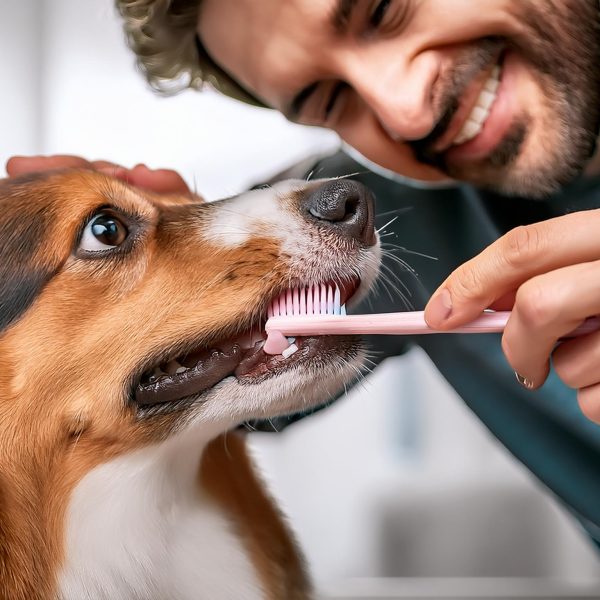Being a pet parent means making your pet’s health and happiness a top priority. Just like us, pets can experience pain or discomfort, but they can’t communicate it verbally. This makes it crucial for pet owners to be aware of cues that indicate their pets might not be feeling well. Recognizing these signals can help in providing timely care and treatment, ultimately enhancing your pet’s overall well-being.
Behavioral Changes
One indicator that your pet might be experiencing pain or discomfort is a shift in their behavior. Pets tend to display changes in their habits or activities when they’re under the weather. For instance, an energetic dog may become less active or hesitant to move, while a friendly cat could become more reserved or seek out hiding spots frequently.
Aggression or Irritability
Another sign that your pet could be in pain is if they exhibit aggression or irritability. Typically calm dogs and cats may show signs of aggression like snapping, growling, or hissing when touched in areas where they are feeling discomfort. This change in behavior is a defensive reaction as they try to shield themselves from pain.
Changes in Appetite
A sudden decrease in appetite or a shift in eating patterns could signal that something’s amiss. Pets might reject food if they are dealing with discomfort, digestive problems, or other internal issues. On the other hand, some pets might overeat as a way to cope with stress or unease.
Changes in Sleep Patterns
Pets experiencing pain may also exhibit changes in how they sleep. They may nap more than usual if they feel sluggish or tired or struggle to sleep due to discomfort. If your pet seems restless at night, pacing around or frequently changing positions, it could indicate they are having trouble finding a comfortable way to rest.
Physical Indications
Apart from behavioral changes, there are physical signs that can suggest your pet is in pain.
Limping or Mobility Issues
One clear sign is limping or hesitance to move. This might point to discomfort, muscle strain, or other mobility challenges. You may observe your dog having difficulty with stairs or your cat hesitating to leap onto surfaces. These signs should not be overlooked, as they often indicate problems that require attention from a veterinarian.
Vocalizations
Some animals are naturally more vocal. If you notice an increase in whining, barking, meowing, or other sounds, it could be a sign that they’re in discomfort. They might cry out when moving or being touched, indicating that a specific part of their body is causing them pain.
Posture Changes
Pets experiencing pain may also change their posture in noticeable ways. For instance, a dog with abdominal pain might arch its back or assume a position like the “prayer pose” (front legs stretched out and rear end up) to relieve discomfort. Cats might curl up tighter than usual or lie differently to lessen their pain.
Excessive Grooming or Licking
Another sign of pain in pets is excessive grooming or licking of certain areas. For example, a dog with arthritis may lick its paws or joints frequently, while a cat could groom one spot on its body excessively. This behavior might lead to hair loss or skin irritation, worsening the issue.
Changes in Bodily Functions
Changes in bodily functions can also indicate that your pet is experiencing discomfort.
Digestive Issues
Digestive problems such as vomiting, diarrhea, or constipation can be linked to pain affecting your pet’s system. Pets may exhibit these symptoms due to digestive troubles or more severe conditions like pancreatitis or kidney issues.
Breathing Issues
If your furry friend is breathing heavily, panting excessively, or experiencing respiratory distress, it might signal pain, especially if these signs occur at rest. Respiratory problems could be linked to chest, lung, or heart discomfort.
Changes in Urination and Bowel Movements
Pain can also manifest through alterations in urination or defecation patterns. Pets might have accidents indoors, struggle while defecating, or display discomfort when relieving themselves. These changes could be tied to urinary tract infections, stomach problems, or other sources of pain.
When to Consult a Veterinarian
If you observe any of these indicators in your pet, it’s crucial to seek advice from a veterinarian. Early detection and treatment can significantly impact your pet’s recovery and overall well-being. Your vet may conduct a physical exam, perform tests, or suggest imaging procedures to pinpoint the source of the pain.
In some instances, managing pain may involve medication, physical therapy sessions, or adjustments in lifestyle. For persistent conditions like arthritis, it’s important to provide ongoing care to ensure your furry friend stays comfortable and enjoys a good quality of life.
Recognizing when your pet is in pain or discomfort is essential so you can take the necessary steps to help them. By observing changes in their behavior, physical signs, and bodily functions, you can detect any problems early on and seek the right veterinary assistance. Remember, your pet depends on you to look out for them and meet their needs—it’s all part of being a responsible owner. By acting promptly and providing proper care, you can ensure that your beloved companion stays happy and healthy.








